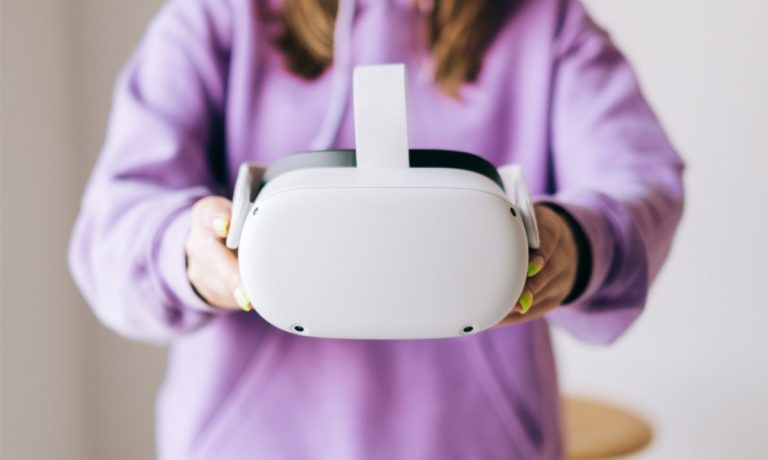
Meta CEO Mark Zuckerberg has poured billions into making the company formerly known as Facebook into a metaverse-first social media experience. This month, players of Meta’s Oculus Quest 3D virtual reality (VR) headset’s games got a taste of what it might eventually look like.
Despite the investment of time, money and prestige involved in renaming the company, Zuckerberg hadn’t made a heck of a lot of progress towards building out an immersive virtual reality that people could actually get social in.
That changed on June 14 when the company released an update of Meta Horizon Home that turned what was essentially a launch site — where players of the 3D games went between signing on and choosing a game to play, or a “transitory space” — into a real, if very, very preliminary metaverse space.
See also: Quest VR Update Adds Social Hang-Outs on Meta Horizon Home
While users could customize it to resemble a snowy mountain cabin or cyberpunk crash pad, the connected experience wasn’t really there. Now, users can invite their friends over to hang out, watch movies and concerts and strategize before entering multi-player games.
Developing the Tech
As for how far off a real metaverse is, on June 20, Zuckerberg showed the progress the company was making in turning out VR headset technology that can make the metaverse into something more than a very cartoonish experience.
The good news is that they’re making progress on a number of technologies to make the experience better. For example, one headset prototype deals with focal depth.
“Normal monitors are a set distance away, so you only focus on one place,” Zuckerberg said. “But in VR and AR, you need to be able to focus on things that are very close and very far from you.”
That requires eye-tracking and “fixing optical distortion in software so quickly that it’s imperceptible to the human eye,” he added. Others deal with the much-higher resolution and brightness needed for a realistic experience.
The bad news is that they all share one characteristic: They’re huge, and they all have to be shrunk into one headset that’s light enough to wear for hours on end.
On a broader metaverse development note, Meta joined Microsoft, Alibaba, Sony Interactive Entertainment and several hundred other tech firms and organizations to launch the Metaverse Standards Forum on June 21. The goal is to create “a venue for cooperation between standards organizations and companies to foster the development of interoperability standards for an open and inclusive metaverse.”
Read more: China’s Tencent Holdings Launches Metaverse Division
Not All Fun and Games
German engineering and technology giant Siemens and chip maker Nvidia have partnered up to build an industrial metaverse where companies can design and test everything from plant holders to whole factories in a 3D “hands-on” experience.
“We can essentially replace having to build a thing in the real world first,” Tony Hemmelgarn, CEO of Siemens Digital Industries Software, told Reuters on June 29.
The goal, he added, is to try to ensure that things “are going to work well before we commit to building them in the real world when it becomes really expensive and difficult to change.”
Related: Siemens, Nvidia, Team up for Industrial Metaverse
On a smaller scale, Lowe’s launched a metaverse hub aimed at helping people visualize home décor and improvement projects — using products available at the home improvement retailer.
Sign up here for daily updates on all of PYMNTS’ Crypto coverage.